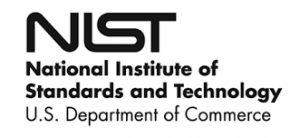 The National Institute for Standards and Technology is working on new password guidelines which will be mandated for government sector users, and strongly recommended for businesses as well. Still in draft from, the standards can be found on the document Special Publication 800-63-3: Digital Authentication Guidelines. Here are some of the recommended changes, so far. We approve, and in many cases have been ...
The National Institute for Standards and Technology is working on new password guidelines which will be mandated for government sector users, and strongly recommended for businesses as well. Still in draft from, the standards can be found on the document Special Publication 800-63-3: Digital Authentication Guidelines. Here are some of the recommended changes, so far. We approve, and in many cases have been ...
SEP

 We warned our readers about the
We warned our readers about the  Holy acronyms Batman! What the heck does this headline mean? Well, the National Institute for Standards and Technology (NIST) has removed two-factor authentication (TFA) via short-messaging service (SMS) from the approved list of two-factor authentication methods. The reason is that SMS is an unencrypted service, and the lack of encryption makes it too insecure for use in Federal authentication systems. NIST is recommending that all ...
Holy acronyms Batman! What the heck does this headline mean? Well, the National Institute for Standards and Technology (NIST) has removed two-factor authentication (TFA) via short-messaging service (SMS) from the approved list of two-factor authentication methods. The reason is that SMS is an unencrypted service, and the lack of encryption makes it too insecure for use in Federal authentication systems. NIST is recommending that all ... I am a firm believer in, and user of two-factor authentication (TFA or 2FA). Heck, if there was three-factor authentication I would probably sign up. The two most popular authenticator apps are Authy and Google Authenticator. I primarily use Google Authenticator wherever I can. I use SMS when Authenticator isn’t an option, or won’t work. I had trouble, for instance, getting Facebook to work ...
I am a firm believer in, and user of two-factor authentication (TFA or 2FA). Heck, if there was three-factor authentication I would probably sign up. The two most popular authenticator apps are Authy and Google Authenticator. I primarily use Google Authenticator wherever I can. I use SMS when Authenticator isn’t an option, or won’t work. I had trouble, for instance, getting Facebook to work ... Bruce Schneier had an
Bruce Schneier had an  Maybe you like the idea of two-factor authentication, but the Google Authenticator smartphone app seems too cumbersome. Or maybe you are not a smartphone owner, because you don’t like the idea of a phone that can track your location to within a few feet, and keeps sharing all your personal data with the apps on your phone. So you own a flip phone ...
Maybe you like the idea of two-factor authentication, but the Google Authenticator smartphone app seems too cumbersome. Or maybe you are not a smartphone owner, because you don’t like the idea of a phone that can track your location to within a few feet, and keeps sharing all your personal data with the apps on your phone. So you own a flip phone ... On Wednesday we discussed the many, many ways your smartphone is vulnerable to attack. Today we will look at solutions. Smart mobile devices need to be secured just as you would a laptop or desktop computer The small size and easy portability of smartphones and tablets make them easier to steal or lose. Some of our recommendations:
On Wednesday we discussed the many, many ways your smartphone is vulnerable to attack. Today we will look at solutions. Smart mobile devices need to be secured just as you would a laptop or desktop computer The small size and easy portability of smartphones and tablets make them easier to steal or lose. Some of our recommendations: